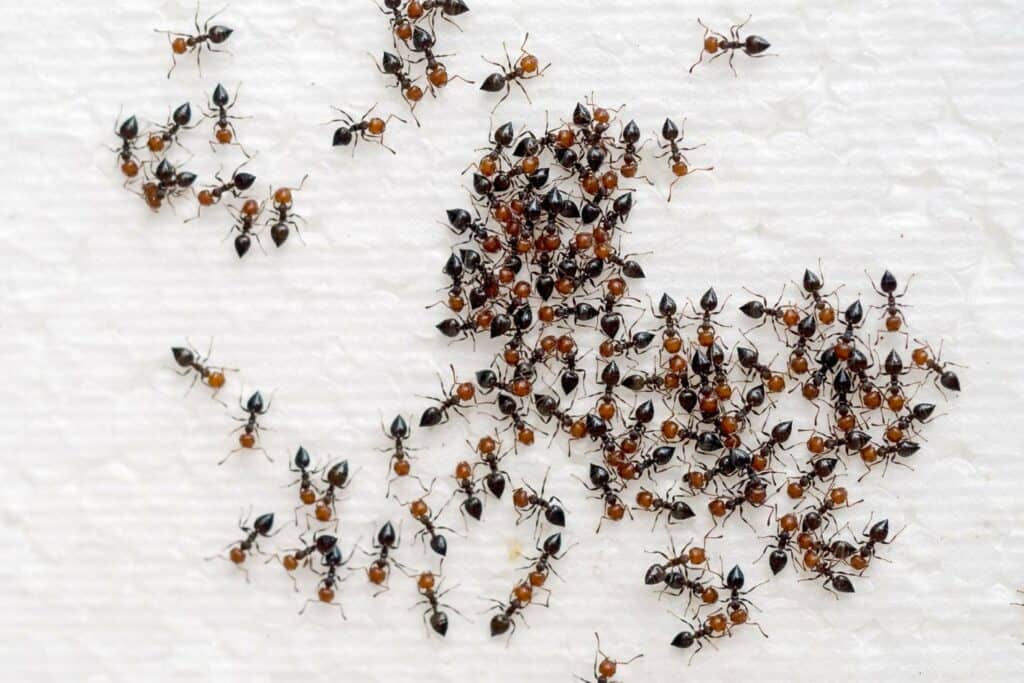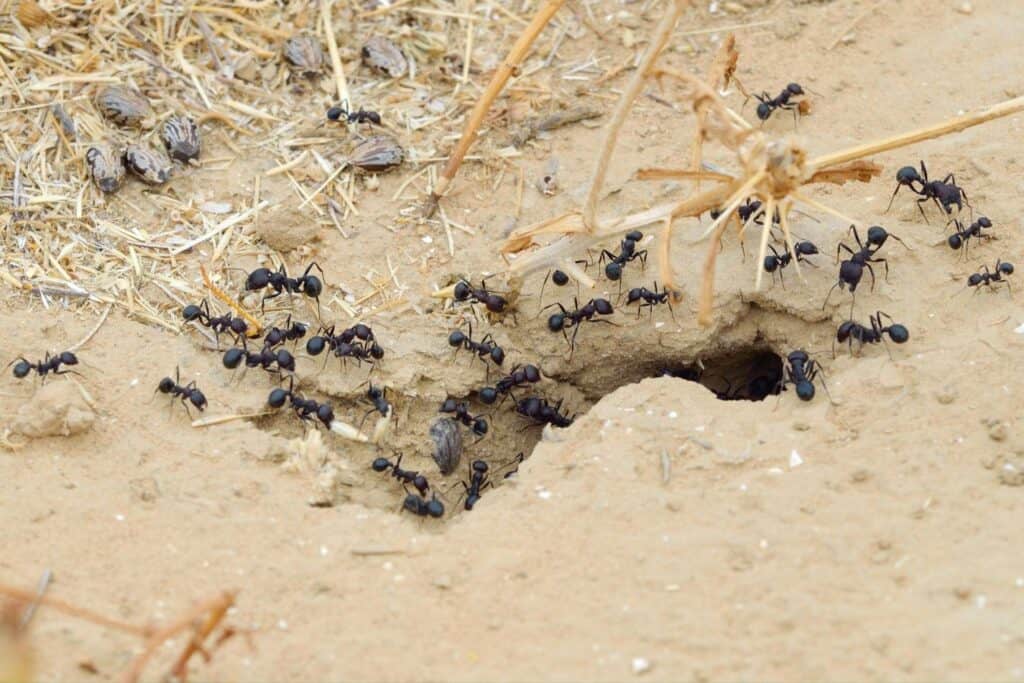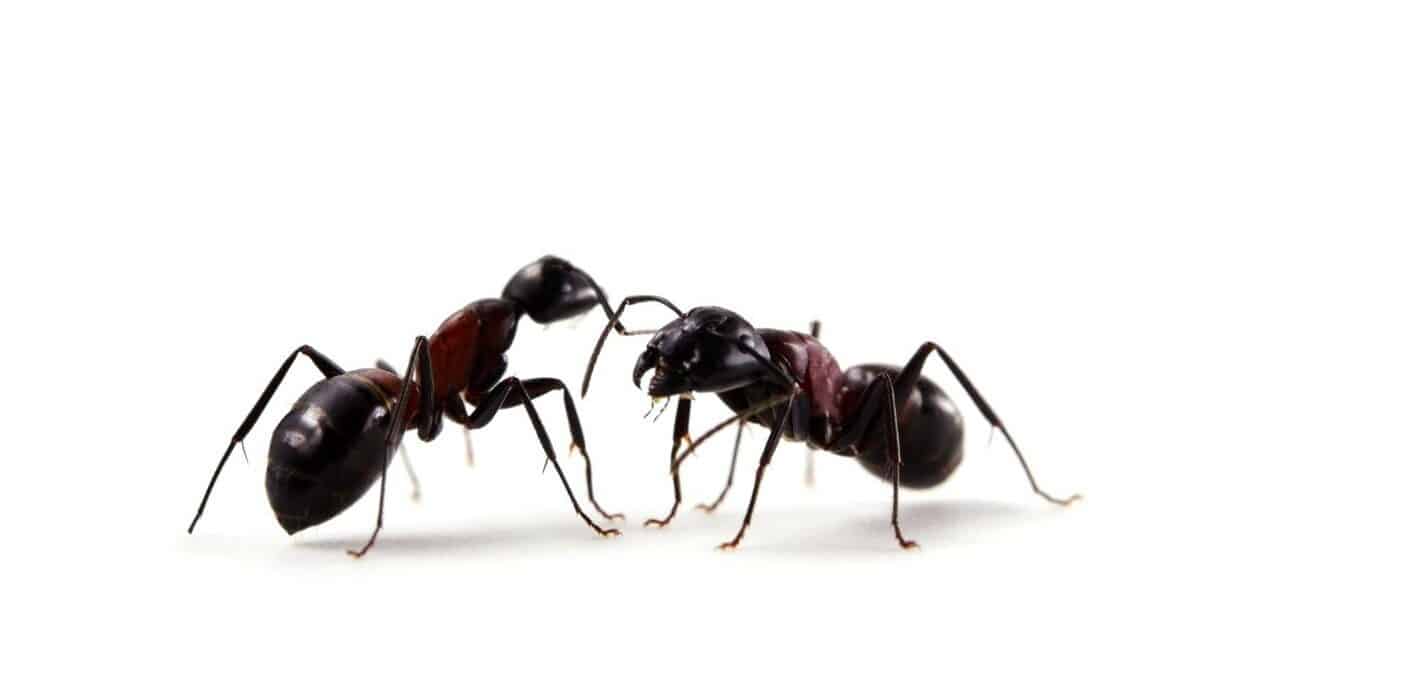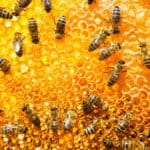A Comprehensive Guide to Eradicating Ant Infestations with Verbose Precision
Introduction
Few adversaries are as persistent and vexing as the humble ant in the eternal dance of humanity and nature. These tiny creatures, seemingly innocuous in their size, can wreak havoc upon our homes, gardens, and peace of mind. Ant infestations have become a prevalent problem that many households battle against with frustration.
Whether it’s the relentless march of determined workers across your kitchen countertops or the sight of ant hills dotting your once pristine lawn, these tiny intruders can quickly become a nuisance that demands attention. The importance of addressing ant infestations cannot be underestimated.
Beyond the aesthetic displeasure they bring, ants can contaminate food sources and compromise hygiene standards in our living spaces. Moreover, some species pose health risks by carrying disease-causing pathogens or delivering painful stings.
Thus, finding effective and long-lasting solutions to eliminate these unwelcome guests and restore tranquility to our homes is imperative. This comprehensive guide will equip you with knowledge and strategies to combat ant infestations successfully.
We will explore the fascinating world of ant behavior and biology to understand their patterns and preferences better. By identifying the source of infestation accurately, whether it be an inconspicuous nest hidden beneath floorboards or a minuscule crack in your walls, we can take targeted action toward eradicating these pests for good.
Distinguishing Common Ant Species

Ever thought about the sheer diversity in the world of ants? These tiny but mighty creatures come in an impressive array of species, each with its unique traits. Recognizing these differences is your first step towards effective ant control. Let’s zoom in on two commonly encountered species – the Carpenter Ants and Fire Ants.
Carpenter Ants: The Home Wreckers
Carpenter ants are the powerlifters of the ant world. Bigger than most species, they sport stylish black or reddish-black attire. But don’t let their dashing looks fool you. These ants are notorious for the structural damage they can cause.
Here’s what you need to know:
- Habitat: They love nesting in decaying wood, including damp spots like basements or bathrooms in your home.
- Color: Black or reddish-black
- Size: Larger than most ant species
Fire Ants: Small but Fiery
Contrastingly, Fire Ants may be smaller, but they pack a punch! Dressed in reddish-brown, these ants are infamous for their aggressive behavior and painful stings.
Quick facts about Fire Ants:
- Habitat: They build large mounds outdoors.
- Color: Reddish-brown
- Size: Smaller than carpenter ants
- Behavior: Extremely aggressive, especially when disturbed
Beyond Carpenter and Fire Ants
Of course, the world of ants doesn’t stop at carpenters and fire ants. Other species, like odorous house ants, pavement ants, or pharaoh ants, may also make a grand entrance into your home or garden. Each species has unique characteristics and behaviors, demanding specific control methods. Remember, knowing your ‘ant-agonist’ is the first step towards effective ant control.
Here’s a simplified table for reference:
| Ant Species | Color | Size | Common Behavior | Habitat |
|---|---|---|---|---|
| Carpenter Ants | Black or reddish-black | Large | Can cause structural damage | Nest in decaying wood, often in damp areas |
| Fire Ants | Reddish-brown | Small | Aggressive, deliver painful stings | Build large mounds outdoors |
| Odorous House Ants | Brown or black | Small | Emit a rotten coconut-like smell when crushed | Nest in wall crevices and under floorboards |
| Pavement Ants | Brown to black | Small | Often seen on sidewalks | Nest under rocks, pavement, and building foundations |
| Pharaoh Ants | Yellow to light brown | Very small | Can spread diseases | Prefer warm, humid areas, often found in kitchens and bathrooms |
| Argentine Ants | Light to dark brown | Small | Aggressive, can form supercolonies | Often nest in moist soil, under buildings, along sidewalks |
| Acrobat Ants | Light brown to black | Small | Raise their abdomen over their head when disturbed | Nest in decaying or damp wood |
| Thief Ants | Yellow to light brown | Very small | Steal food and larvae from other ant colonies | Prefer high protein foods, often nest in cracks or crevices |
| Harvester Ants | Red, brown, or black | Large | Collect and store seeds | Prefer desert or dry, sandy areas, create noticeable mounds |
Remember, the specific behaviors and preferred habitats can vary even within the same species of ants, based on the climate, availability of food, and other environmental factors. Always consider seeking advice from a pest control professional when dealing with a significant ant infestation.
Exploring ant colonies and their hierarchical structure
Subtitle: Unveiling the Intricacies of an ant society Ants live in elaborate colonies with intricate social structures. Each colony consists of three primary castes: workers, soldiers (in some species), and the queen(s).
The workers make up most of the colony’s population and perform various tasks such as foraging for food, caring for larvae, and expanding the nest. Soldier ants have a distinct appearance with larger heads and powerful mandibles for defense against predators or rival colonies.
They protect their colony by forming lines when threatened. The queen(s) play a crucial role in reproduction; they lay eggs that hatch into new individuals to sustain the colony’s population growth.
They are generally larger than other members of the colony but lack wings (unlike male reproductive ants). The complex organization within an ant colony ensures its survival through division of labor and efficient communication, creating a thriving society with a clear hierarchy.
Highlighting the foraging patterns and food preferences of ants
Subtitle: Ants’ relentless pursuit of sustenance Is driven by their constant search for food, and understanding their foraging patterns and preferences is essential to control an infestation. Ants follow trails established by pheromones left behind by their fellow workers, which guides them to and from reliable food sources.
Different ant species may exhibit different foraging habits; some ants are scavengers, while others prefer sweet substances or protein-rich foods. Understanding these preferences can help in deploying effective baits or repellents.
Additionally, ant colonies prioritize collecting and transporting food to secure their survival during times of scarcity. They are highly organized in this task, with workers forming impressive lines or trails between the nest and the food source.
By comprehending the intricacies of ant behavior, from species identification to understanding their social structure and feeding habits, we gain valuable insights into combating ant infestations effectively. With this knowledge, homeowners can adopt appropriate strategies targeting specific ant behaviors and minimizing future invasions.
Identifying the Source of Infestation
Conducting a thorough inspection to locate ant nests or entry points

Ant infestations can be pretty persistent and challenging to eliminate without targeting their source. To effectively deal with the problem, conducting a comprehensive inspection of your premises is crucial. Begin by examining your property’s interior and exterior, paying close attention to areas where ants are commonly found, such as kitchens, bathrooms, and near food sources.
Inside your home, carefully check for any cracks or gaps in walls, floors, windowsills, or door frames that could serve as potential entry points. Ants are remarkably skilled at squeezing through even the tiniest openings.
Additionally, inspect dark corners, cabinets, and under sinks where ant nests may be hidden. Moving outside, examine the foundation of your house for any visible signs of ant activities like trails or mounds.
Pay attention to vegetation near the foundation as ants may use plants as bridges to access your home. Tree branches touching the roof or exterior walls should also be trimmed back since they can provide easy access for ants.
Recognizing signs of an infestation (e.g., ant trails, piles of discarded wings)
Identifying signs that indicate an ant infestation is crucial in implementing effective pest control measures. One common indication is observing trails created by ants moving back and forth between their nest and a food source. These trails are usually well-defined and consist of multiple individuals following a scent pheromone left behind by scout ants scouting out new food sources.
Another telltale sign is discovering piles of discarded wings around windowsills or other entry points during swarming season when reproductive ants take flight to establish new colonies. These wings are shed after mating flights and can suggest that an active nest exists nearby.
Furthermore, keep an eye out for small mounds or earth excavations near the foundation, which can indicate the presence of certain ant species like fire ants or pavement ants. Such mounds serve as entrances to their underground nests.
Utilizing bait stations or traps to determine the most active areas
Once you have identified potential entry points and signs of infestation, it is essential to determine the most active areas for effective ant control. Utilizing bait stations or traps can be an effective strategy in this regard. Bait stations consist of a small container filled with a tempting food source and an ant-specific poison that workers carry back to the colony, ultimately eliminating it.
Place these bait stations near known entry points, along ant trails, or nearby areas where you’ve spotted high ant activity. Monitor these stations regularly and replenish them as needed until ant activity subsides.
Alternatively, sticky traps can also be deployed strategically where ants are likely to encounter them. These traps are coated with a sticky substance that immobilizes ants once they step onto it.
Placing multiple traps around your home lets you gather information about the most active areas and adjust your pest control measures accordingly. By thoroughly inspecting your premises, recognizing signs of infestation, and strategically using bait stations or traps, you will significantly enhance your chances of targeting ant colonies at their source and successfully eliminating them from your environment.
Natural Remedies for Ant Control

Eco-Friendly Defense: Using Natural Ant Repellents
The Power of Your Pantry: Vinegar, Lemon Juice, and Essential Oils
Who knew your pantry held such potent ant-fighting warriors? Vinegar, lemon juice, and essential oils are more than just kitchen essentials. They double as super-effective, natural ant repellents. Here’s how they work:
- Vinegar: This humble household staple is a secret ant deterrent weapon. Its acetic acid content creates a homemade repellent spray that confuses ant trails and disrupts their communication.
- Lemon Juice: The high citric acid concentration in lemon juice is a powerful ant deterrent. The scent and acidity disorient the ants and keep them at bay.
- Essential Oils: Peppermint or tea tree oil can create an aromatic shield against ants. The strong scents overwhelm the ants’ scent trails, leaving them lost and confused.
Table: Homemade Ant Repellents
| Ingredient | How It Works | How to Use |
|---|---|---|
| Vinegar | The acetic acid disrupts ant trails and communication. | Mix equal parts vinegar and water in a spray bottle. Apply along ant trails or entry points. |
| Lemon Juice | The citric acid disorients ants. | Mix fresh lemon juice and water in a spray bottle. Spray around windowsills, doorways, and other entry points. |
| Essential Oils (Peppermint or Tea Tree) | The strong scent disrupts ants’ scent trails. | Mix a few drops of oil with water in a spray bottle. Spray near ant-infested areas. |
DIY: Craft Your Own Ant Repellent Sprays or Wipes
Home-brewing your ant repellents saves money and lets you control the ingredients. Let’s get a bit crafty with some easy-peasy recipes.
Recipe: Homemade Ant Repellent Spray
- Mix one cup of water, two tablespoons of white vinegar, and 10 drops of peppermint essential oil in a spray bottle.
- Shake well before each use.
- Spray in areas where ants are commonly seen or at suspected entry points.
Recipe: Ant-Repellent Wipes Infused with Fresh Herbs
- Fill a glass jar with vinegar or lemon juice and add a handful of crushed herbs like mint or rosemary.
- Let it sit for a few days to allow the flavors to infuse.
- Strain the solution into another container.
- Pour the solution over soft cloth wipes.
- Resoak the wipes for multiple uses, and keep the container sealed when not in use.
Always do a patch test with these homemade solutions to ensure they’re safe on your surfaces. Also, consider reapplying every few days or post-cleaning for max effectiveness.
Chemical Solutions for Ant Extermination
The Power of Insecticides: A Battle Against Ants
When faced with a persistent ant infestation, sometimes natural remedies may not suffice, and it becomes necessary to employ chemical solutions. Insecticides offer a potent way to combat these tiny intruders effectively. However, it is essential to choose the right type of insecticide based on the location and severity of the infestation.
Contact Insecticides vs Residual Insecticides: Weighing Your Options
Contact insecticides and residual insecticides are two primary categories of chemicals used in ant eradication. Contact insecticides deliver immediate results upon direct contact with ants, providing instant control over visible populations. They are ideal for spot treatments, targeting specific ant trails or entry points.
On the other hand, residual insecticides create a lasting barrier that continues to kill ants over time. When applied correctly, they can provide long-term protection by eliminating both existing ants and potential newcomers.
Residual insecticides are particularly useful in outdoor settings where ants access buildings through cracks or crevices. Each category has its advantages and considerations.
While contact insecticides offer quick results, they may not offer long-lasting protection against future invasions. Residual insecticides provide extended control but require careful application to prevent harm to humans or pets.
Safety Precautions: Protecting Yourself and Your Environment
When handling chemical products for ant extermination, safety should never be compromised. It is crucial to prioritize personal safety by wearing protective clothing such as gloves and goggles while using these substances. Carefully read and follow all instructions provided by the manufacturer on product labels.
To minimize environmental impact and potential harm to beneficial insects like bees or butterflies, it is important to select low-toxicity formulations specifically designed for controlling ants. Additionally, ensure proper storage and disposal of chemical products, adhering to local regulations.
Targeted Approaches for Specific Ant Species

Carpenter Ants: Protecting Your Wooden Structures
Carpenter ants can wreak havoc on wooden structures, causing significant damage over time. Identifying their presence early is crucial to prevent further destruction. Look for signs such as piles of wood shavings or small holes in wooden surfaces.
To combat carpenter ants effectively, it is important to eliminate conditions conducive to their infestation. This includes removing sources of moisture and decaying wood that may attract them.
Strategies like repairing leaks and replacing damaged wood can help deter these destructive insects. Additionally, using borate-based products on susceptible surfaces acts as a preventive measure against future infestations.
Fire Ants: Taming the Flame-Bearing Intruders
Fire ants are nuisance pests and pose a threat due to their painful bites and stings. When dealing with fire ant infestations, it is crucial to prioritize safety while effectively controlling their population. Begin by identifying fire ant mounds in the vicinity and taking appropriate precautions during treatment.
Baiting effectively controls fire ant colonies, targeting the entire population rather than individual ants. Applying insecticides directly onto mound entrances can provide localized control as well.
It is important to note that fire ant management may require multiple treatments over time due to their resilient nature. Regular vigilance and prompt action will help bring these fiery intruders under control while safeguarding your surroundings.
Conclusion
In the battle against ants, chemical solutions provide a powerful arsenal when natural remedies fall short. Contact insecticides offer immediate results upon direct contact with ants, whereas residual insecticides create a lasting barrier for long-term protection against infestations.
However, while using chemical treatments, it is crucial to prioritize safety by wearing protective gear and following guidelines provided by manufacturers. Additionally, targeted approaches for specific ant species like carpenter ants and fire ants can help address their unique characteristics and potential damage.
By understanding the nuances of chemical solutions and employing targeted strategies, you can effectively rid your home of these tiny invaders. Remember, persistence and careful application will ensure success in reclaiming your space from ant infestations.






